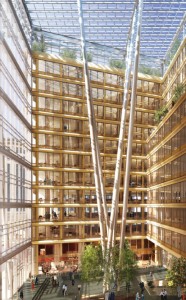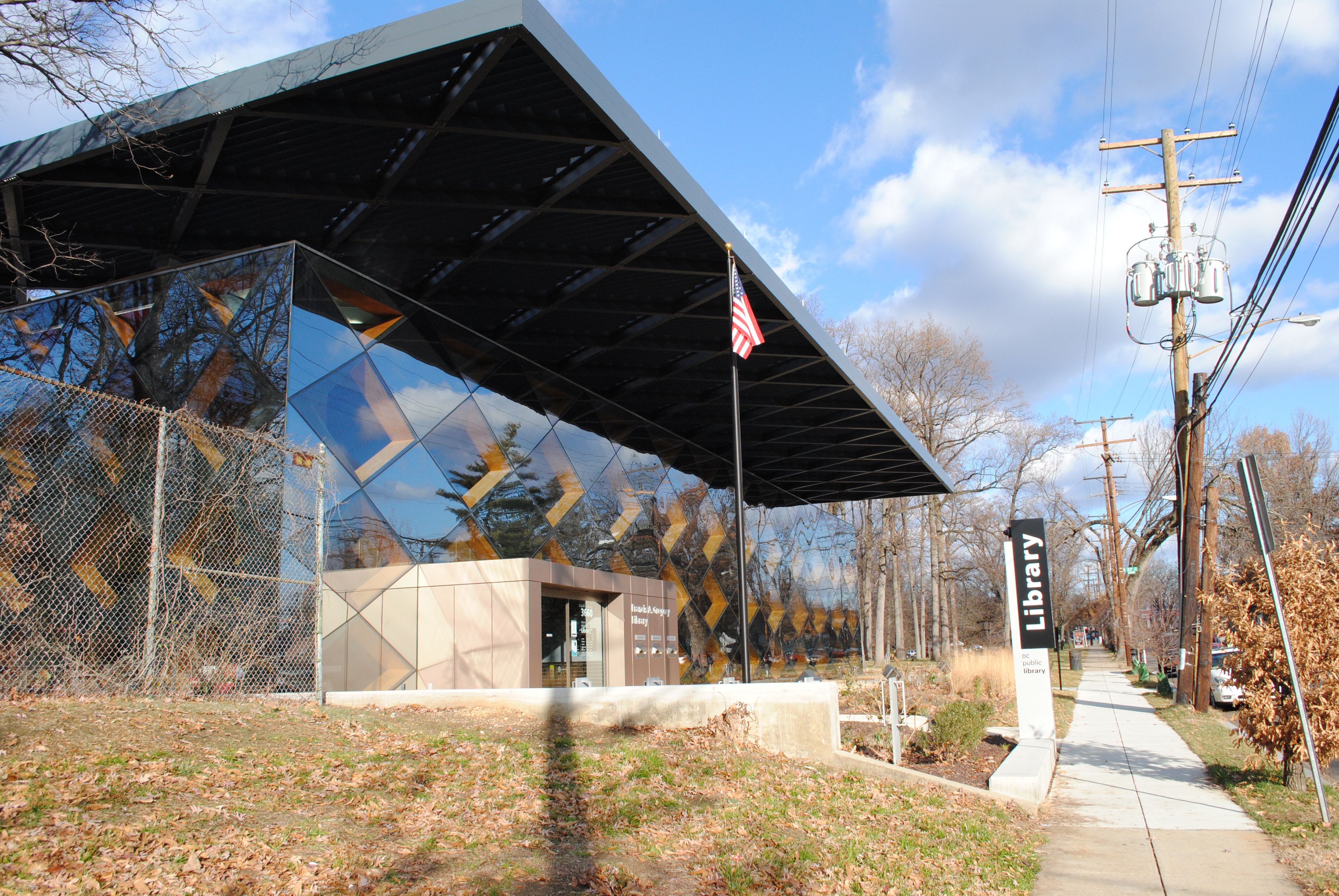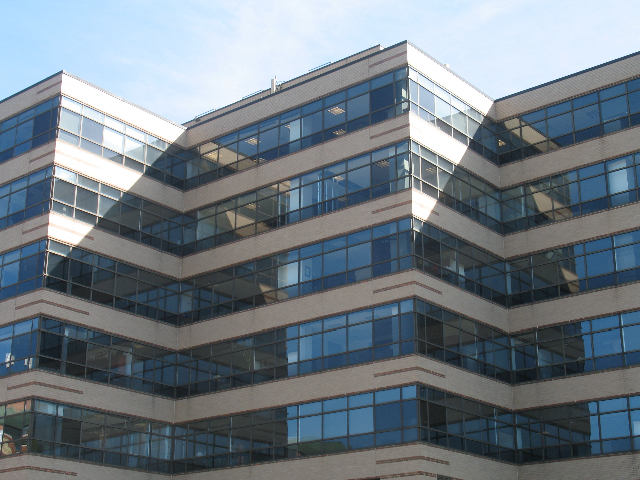If you look at a map of the old convention center site, there are six blocks. The southern three are owned by
Hines-Archstone and are being designed by
Foster + Partners and
Shalom Baranes. Buildings there are now
well above ground, destined for opening in 2013. A park by
Gustafson Guthrie Nichol will eventually enliven New York Avenue and the middle block will probably be a hotel once the market shakes out. The last block, though, has been mysterious for years, appropriately noted in this map with a question mark.

The mystery property is owned by the Gould Property Group, headed by well-bearded parking magnate Kingdon Gould, III. It turns out that the project is much further along in development than I had expected: Gould has hired Pickard Chilton to design a rental office building, named 900 New York Avenue. You can find the plans here. Renderings reveal a gold-colored building with expressed floorplates and lots of glass.

Seems like a bit of retro-eighties work, which is odd since Pickard Chilton are known for their glass. Considering that it’s such a massive building it’s unfortunate PCA chose to not express vertical elements to break up the length of the block. The central atrium, on the other hand, looks like a really great opportunity for social space, while the “urban layer” bottom seems primed to enliven the streets. Putting aside my aesthetic preferences, the project will really add vitality to the area. In particular, the large atrium, shown here in ground plan and rendering, looks promising as a space that engages the pedestrian alley.


It’s interesting that the building cantilevers about five feet out over the sidewalk above the second floor. I wonder if this is meant to open up sidewalk space, or if it is a strange reading of the projections law. More renderings here.
All images courtesy Gould Property Group/Pickard Chilton.






